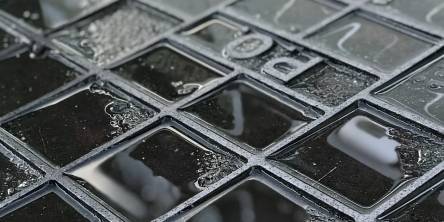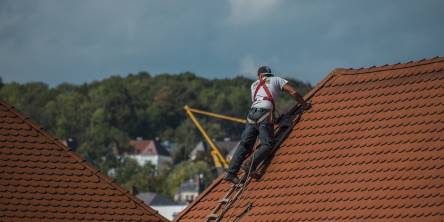7 Biggest Threats to Your House

Despite being such a resilient structure where numerous people can live comfortably, your house is susceptible to many different factors. Even if it was made from sturdy materials such as stone or brick, it would eventually need maintenance.
Of course, certain things are more dangerous than others. Termites, high humidity and mold, leaks, snow, and rain, are just a few threats you need to consider. Of course, some of them will be more problematic than others; it all depends on where you live and the region's specific climate.
In this article, I will talk about the 7 biggest threats to your house and what to do about them.
1. Environmental issues
The environment is the biggest threat to any house. Construction companies always create homes that can withstand the local climate. They build a foundation that is right for a particular soil and that can even endure a certain level of seismic shock.
However, even if we disregard cataclysmic events such as tornados, hurricanes, and earthquakes, which are beyond our powers, we should still consider how a house would react to prolonged droughts and rainy seasons.
2. Problems with windows
The general rule of thumb is that windows should be replaced once every 20-25 years. As you probably know, this is one of the biggest expenditures that homeowners have to face. Despite your reluctance, there are lots of different reasons why you should do this, even if your windows are not completely rundown.
“Windows and doors have a direct impact on 25% to 30% of heat loss. So, if they’re not working properly, you could be wasting a lot of money each month without even realizing," warns Fox Family Heating & Air, a heating and air conditioning company.
Although you shouldn’t be too hasty with window replacement, you should check them once in a while just to see if they’re still doing their job.
3. The trouble with the water heater
An average water heater should work properly for at least 10 years. After that, you should start checking on it regularly. If you notice that it's no longer heating water properly or that it's starting to break down, it would be much more efficient money-wise to simply get a new one.
Luckily, this expenditure cannot compare to windows. Average water heaters usually come at around $1,000 to $1,500. If you consider that a repair can cost several hundred dollars, you quickly realize that full replacement is a better way to do things.
4. Termite infestation
The biggest issue with termites is that they're hard to detect. They crawl deep into your walls and start chomping the house from the inside. You might notice them in certain areas, such as the basement, but, for the most part, they are really hard to detect.
Once again, this is one of the things that should be checked once in a while. Unfortunately, most homeowners realize they have a termite problem when it's already too late. There are a few things you can do with these nasty pests, but you need to put the right measures ahead of time.
5. Water leaks
Water leaks are a real environmental disaster. Each year, thousands and thousands of gallons of water are wasted in the US alone. These leaks usually occur in the toilets due to ruptured pipes.
However, the issue can appear just about anywhere on your property. For example, bursting pipes are a common problem during winter when water tends to freeze within them.
6. The threat of CO2
Although everyone is aware of the threat that CO2 poses, we usually take it for granted. The gas is odorless, without any color, and you often don't even realize that you're getting poisoned. CO2 is especially harmful to small children who have less developed respiratory systems.
You need to address this problem before it escalates. Getting gas detectors is the best way to go about things. Not only does it indicate CO2 in the air, but it can show you that there is a problem with oil, gas, or charcoal-based appliances within the house.
7. Issues with vents
Poor ventilation is the main reason behind the majority of fire accidents in the US. The most common issue is lint accumulation. Even if you're regularly cleaning the dryer, there is a chance you're neglecting the exhaust vent, where it tends to pile up.
As lint starts accumulating within, it reduces the airflow causing a temperature increase and ultimately increasing the chance of a fire.
Similar Articles
A well-maintained yard drainage system is key to preserving the beauty and health of any property. Poor drainage can lead to standing water, soil erosion, and even foundational damage to structures over time.
Keep your seaside home in top shape with these 4 expert tips! Learn about weatherproof materials, smart maintenance, and managing coastal challenges effectively.
Explore the future of roofing! Discover energy-efficient materials, smart systems, and sustainable designs reshaping modern home construction trends.
HVAC stands for heating, ventilation, and air conditioning. These all-in-one systems keep your home comfortable and improve air quality throughout a building. Often used in commercial buildings, HVAC units are increasingly used in residential buildings.
Safeguard your home after storms with timely roof repairs. Detect damage early, choose durable materials, and rely on a pro for lasting protection and peace of mind.
Learn how to balance a clean home and family life with these 6 practical tips to manage clutter, involve kids in chores, and set realistic expectations.
Homeowners are increasingly drawn to farmhouse-style architecture, which creates an inviting atmosphere in their homes that prioritizes comfort and coziness over aesthetics.
Discover transformative home renovation ideas for modern living, with trends, expert tips, and sustainable, budget-friendly practices to elevate your space.
Exterior shutters can make a brick house stand out, adding personality and charm. Homeowners often wonder if installing shutters on brick is a challenge, and it’s a valid concern.









